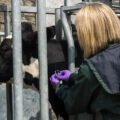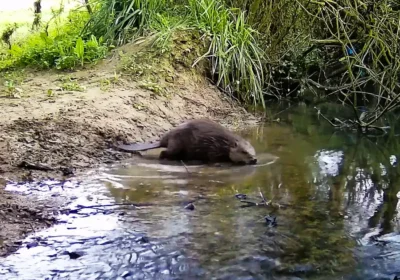by Tria Stebbing
WITH the village enjoying a coronation picnic on the parish field, the sun came out, which meant for us one thing. The flock nearest to us had reported a fly strike, so any thoughts of a picnic disappeared as we rushed to the paddock with the appropriate dousing gun and a pair of shears.
Fly strike gets worse when the weather is warm and wet, which it has been lately. Blowflies are the culprits, the green/blue ones that come out in the summer, they lay their eggs in the wool, and when they hatch, they start to eat into the skin of the sheep.
The season used to be May to September but with the seasonal variations this can change year on year. As the fly targets the dried loose faeces on the back end of the animal, it is important to keep them neatly trimmed and clear of soiled fleece. Which brings us back to the nasty job in hand while the village were celebrating.
We put up a holding area to pen the ladies in, without stressing them out, and began the back-breaking job of trimming, treating and tail maintenance. While we had them, we turned them over to trim feet and look for sore spots. A job well done, by the end of the afternoon the shearlings were all done with some relief on our part as we had spotted a lot of flies around them.
The fleece on the shearlings is very dense currently – they are last year’s lambs that have not been shorn yet, hence the name. As black sheep, I can only imagine how hot they must be feeling when the sun does come out. They are booked in for shearing early June.
Sheep that are being taken to the agricultural shows are shorn much earlier, as early as January, to ensure the fleece is a good length for showing. It always seems a bit cruel to me that they spend the coldest months with no coat on. The black sheep are also kept out of the sun just before a show, so that the black is dark and not bleached out by the sun.
The lambs continue to thrive and are playing ‘zoomies’ around the paddock, in between roughly butting mum’s udders to let down the milk. Our brush with mastitis seems to have safely passed and we are enjoying the fun that the lambs bring to the flock.
Like other smallholders, we could do with some dry days now as the mud is back and getting firmly stuck in between the sheep’s hooves, and the lambs are sliding about when trying to suckle – clearly it was Ash before Oak this year!









Leave a Reply